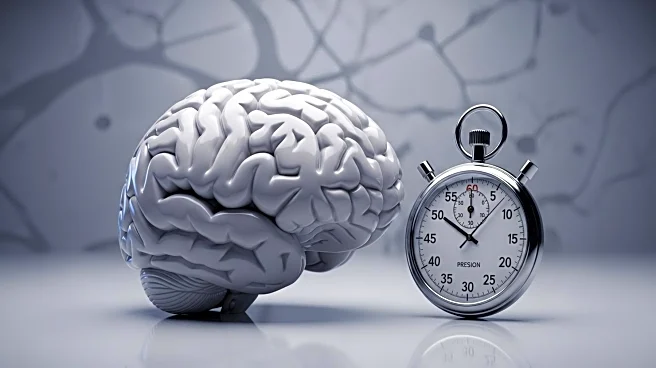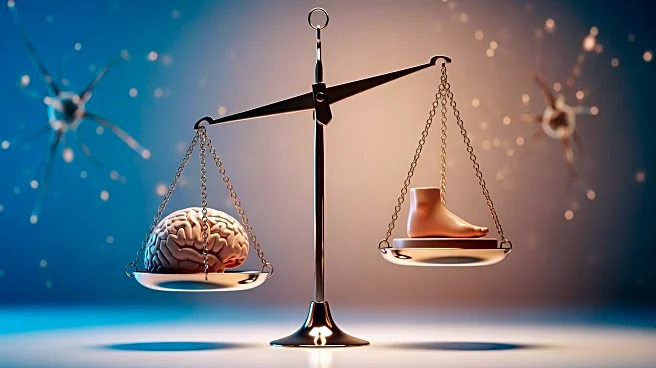What is the story about?
What's Happening?
Recent research has delved into the effects of attentional focus strategies on motor performance among young adolescents, particularly examining the role of task difficulty. The study investigates three primary focus strategies: internal, external, and holistic. Internal focus involves concentrating on one's own body movements, while external focus directs attention toward the intended outcome of the movement, such as hitting a target. Holistic focus, a newer strategy, involves concentrating on the general sensations experienced during a task, like feeling explosive or smooth. The research highlights that external focus often leads to better motor performance across various tasks, including throwing and kicking, due to its encouragement of automatic control processes. However, the effectiveness of these strategies can vary depending on the complexity of the task and the individual's level of expertise. The study aims to clarify these effects, especially in young populations, where previous findings have been inconsistent.
Why It's Important?
Understanding the impact of attentional focus strategies on motor performance is crucial for optimizing training and development in sports and physical education. These strategies can significantly influence how young athletes and students perform, potentially enhancing their skills and efficiency. The findings suggest that adopting an external focus may improve performance by promoting automatic control processes, which could be beneficial in educational settings and sports training programs. Additionally, the research highlights the importance of considering task difficulty and individual differences when applying these strategies, which could lead to more personalized and effective training methods. This knowledge is valuable for coaches, educators, and therapists aiming to improve motor skills in adolescents, potentially leading to better outcomes in sports and physical activities.
What's Next?
Further research is needed to explore the nuances of attentional focus strategies across different contexts and populations. The study suggests that task difficulty and individual expertise levels may moderate the effectiveness of these strategies, indicating a need for more targeted investigations. Future studies could focus on specific sports or activities to determine the generalizability of these findings. Additionally, exploring the long-term effects of attentional focus strategies on motor performance and cognitive development in adolescents could provide deeper insights into their potential benefits. Researchers may also investigate how these strategies can be integrated into training programs to enhance performance and learning outcomes.
Beyond the Headlines
The exploration of attentional focus strategies opens up discussions on the cognitive and motivational aspects of motor performance. The constrained action hypothesis suggests that internal focus may restrict automatic control mechanisms, while external focus encourages unconscious, rapid actions. This has implications for understanding how cognitive processes influence physical performance and could lead to advancements in psychological and educational approaches to training. Moreover, the study's findings on holistic focus strategies highlight the potential for integrating sensory experiences into training, which could revolutionize how athletes and students approach physical tasks.
AI Generated Content
Do you find this article useful?














